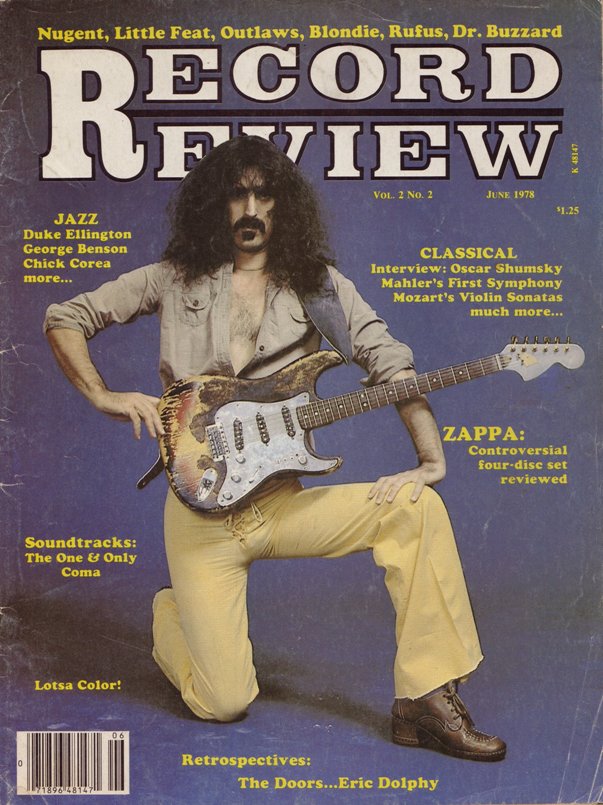
Frank Zappa Ship Arriving Too Late Rarlab
Ship Arriving Too Late To Save A Drowning Witch. May 3rd 1982. This Buyways Wrap Up Copy Was Personally Written By FRANK ZAPPA Whose Unique Humor We.
Contents • • • • • • • • • • Production [ ] Side 1 was recorded at Zappa's studio at his home in; while Side 2 consisted of live performances from Zappa's fall 1981 U.S. Dell driver download. Tour with studio overdubs. The live material was originally intended for an unreleased double album tentatively titled either Chalk Pie or Crush All Boxes II, which was scrapped after Zappa's record distributor requested a single album instead.
The cover art for the album shows the classic, by artist (from which the album gets its name), whose shapes also suggest the letters 'ZA' (and 'P', sideways), as in 'Zappa'. At the time of the album's production, Price was living nearby to Zappa. The phrase 'Ebzen Sauce' in 'No Not Now' is an example of a, which in this case is of 'Epsom Salt', an alternative name for, and, in the February 1983 issue of magazine, the song was said to have an 'extremely distinctive bass line', which Zappa liked 'because for people who don't understand what's going on in the rest of the song, there's always the bass line'. ' – the second song on the album, and the song that would eventually become the album's single – was a combination of a guitar riff that Frank had composed, and a desire from his daughter,, to work with her father.
Musically, it is one of the most atypical Zappa tunes because of how relatively 'normal' it is compared to other compositions, and is played entirely in 4/4 with the exception of the 7/4 groove at the very end. Tom Mulhern observed in Guitar Player that the 'red-hot' guitar riff had actually been mixed 'back in the mix', which Zappa explained was 'because it conflict[ed] with the vocal part. And that red-hot-sounding guitar was just me and the drummer jamming at three o'clock in the morning. That track was the basis for the song.
It was a riff that started off at a soundcheck about a year before, and I had been piddling with it for a long time. One night, we finally did it, saved the tape, and little by little we added all of this other stuff to it, and we got 'Valley Girl'.' 's bass line was spontaneous and played through a Vox amp, and was the final addition to the song, which originally 'didn't even have a bass part; it was [originally] just guitar and drums'. The pseudo-title track, 'Drowning Witch', begins with lyrics written to fit the theme of the cover art, and the subsequent lengthy instrumental section is one of the most complex instrumentals that Zappa ever wrote, featuring from by and the TV theme composed by and. In Guitar Player, Zappa commented that the album version included 15 edits between live performances from different cities. 'Envelopes' was originally written in 1968 – with a prototype recording made during the original 's European tour that year (which remains unreleased due to its inferior performance) – and is constructed around a based on seventh and eighth note chords that 'generate their own counterpoint as an automatic result of the voice leading'. Zappa's band for the fall 1981 and summer 1982 tours, which he would continue to feature on the next few albums and the You Can't Do That On Stage Anymore series, included on rhythm guitar and vocals, on guitar, on keyboards, Bobby Martin on keyboards, sax and vocals, on percussion, on bass and on drums.

For studio sessions, he also used past band members including vocalists, Bob Harris and and bassists and. The album 'was mixed on speakers' with and compressors, consequently giving a 'played up' prominence to its song' bass lines. Release history [ ] The original release contained a note that reads 'This album has been engineered to sound correct on 4311 speakers or an equivalent. Best results will be achieved if you set your pre-amp tone controls to the flat position with the loudness control in the off position. Before adding any treble or bass to the sound of the album, it would be advisable to check it out this way first. The LP also featured a 'letter from FZ' advertising the box set, which had previously only been made available separately in the United States and, at the time Ship Arriving Too Late to Save a Drowning Witch was released, was being made available for the first time in Europe. To promote the release of the UK box set, the first pressing of the UK edition of this album contained a 4-song 7' EP with A: 'Shut Up & Play Yer Guitar' B1: 'Variations on the Carlos Santana Secret Chord Progression' B2: 'Why Johnny Can't Read?'